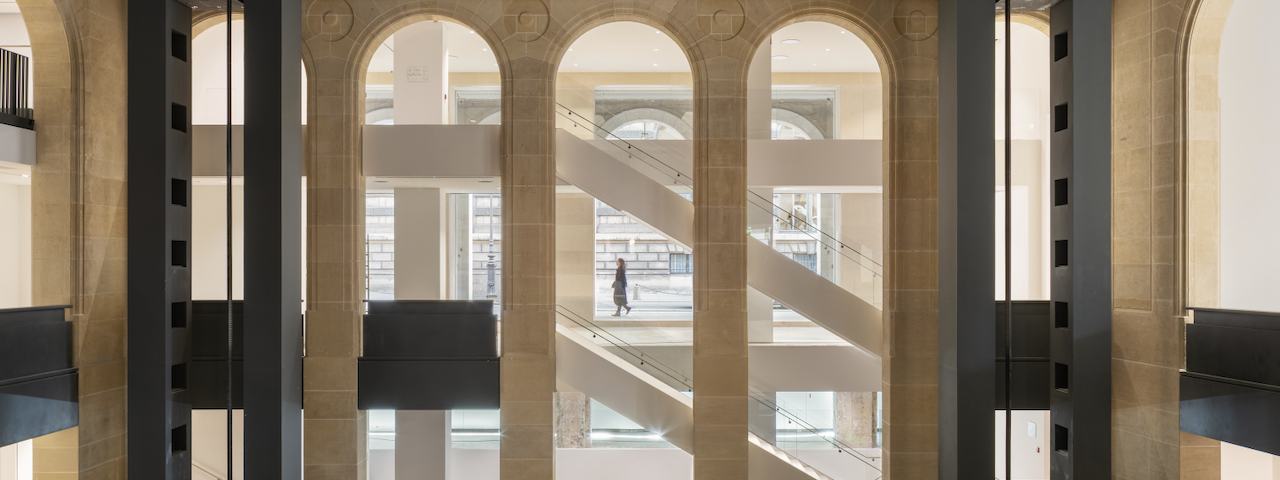On October 25, 2025, the Fondation Cartier pour l’art contemporain will open its new premises to the public at 2 Place du Palais-Royal, in the heart of Paris, with an inaugural exhibition drawn from its Collection, entitled 'Exposition Générale'.
Located in the historic centre of Paris, the Fondation Cartier’s new space is situated within a Haussmannian building that once housed the Grands Magasins du Louvre. Designed by Jean Nouvel, the architectural project opens generously to the city through its vast bay windows. Comprising of five mobile platforms, its dynamic architecture reimagines the possibilities of exhibition-making. In this striking meeting place where past and future converge, the architecture of the new Fondation Cartier becomes an extension of both the urban landscape and the building’s storied past.
On view until the end of August 2026, 'Exposition Générale' will showcase both the Fondation Cartier’s artistic identity and its legacy, through nearly six hundred works by more than one hundred artists who have participated in its programming since 1984 to the present day. Reflecting the institution’s history and its openness to the world in all its diversity, the Fondation Cartier Collection bears witness to forty years of contemporary international creation. The exhibition draws from this unique collection, shaped and built over time through its programming. The inaugural presentation will include solo exhibitions and thematic ensembles that reflect the Fondation Cartier’s long-standing artistic commitments. Architecture, living worlds, technology, and the sciences are explored through emblematic works and key fragments of selected past exhibitions that have defined the history of the institution.
The title 'Exposition Générale' echoes the 19th century exhibitions of objects and clothing once held in the Grands Magasins du Louvre. Existing at the same time as the World Fairs - whose first Parisian edition in 1855 coincided with the building’s construction during Haussmann’s urban transformation – these “Expositions Générales” (general exhibitions) served as spaces of discovery and social encounter and offered a new understanding of material culture. The building may be seen as a symbol of modernity in Paris, which the Fondation Cartier intends to bring into dialogue with its Collection. In the spirit of those early “Expositions Générales”, founded on a philosophy of openness, this inaugural exhibition is conceived by the institution as a public space for experimentation and exchange in the heart of the city.

